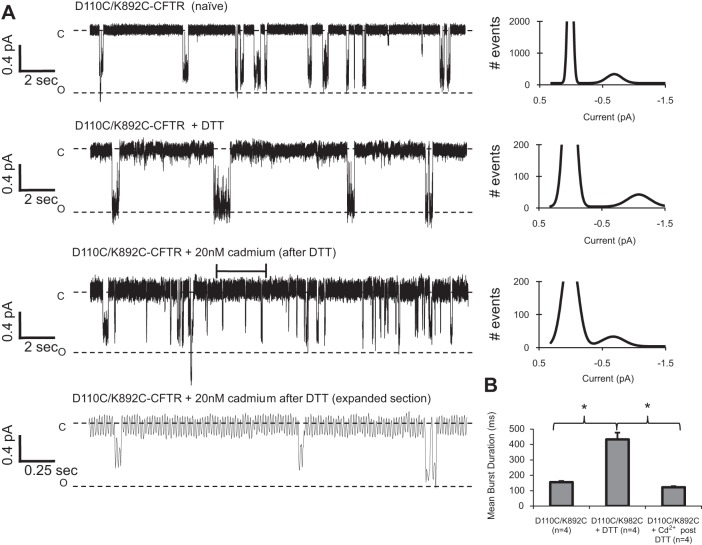Fig. 7.
DTT and cadmium modulated single-channel behavior of D110C/K892C-CFTR channels. CFTR variants were activated by 1 mM ATP and 127 U/ml PKA, and recordings were made at Vm = −100 mV. A: D110C/K892C-CFTR channels recorded with standard pipette solution opened briefly and to a variable conductance level (D110C/K892C-CFTR naïve). D110C/K892C-CFTR channels in the presence of 1 mM DTT opened stably to a full conductance (D110C/K892C-CFTR + DTT). D110C/K892C-CFTR channels in the presence of 20 nM cadmium opened briefly to a range of subconductances [D110C/K892C-CFTR + 20 nM cadmium (after DTT)]. Bottom trace: expanded representation of bracketed area in the “D110C/K892C-CFTR + 20 nM cadmium (after DTT)” trace. A corresponding amplitude histogram fit to a Gaussian distribution accompanies each trace. B: mean open burst duration for each condition. *P < 0.05.

